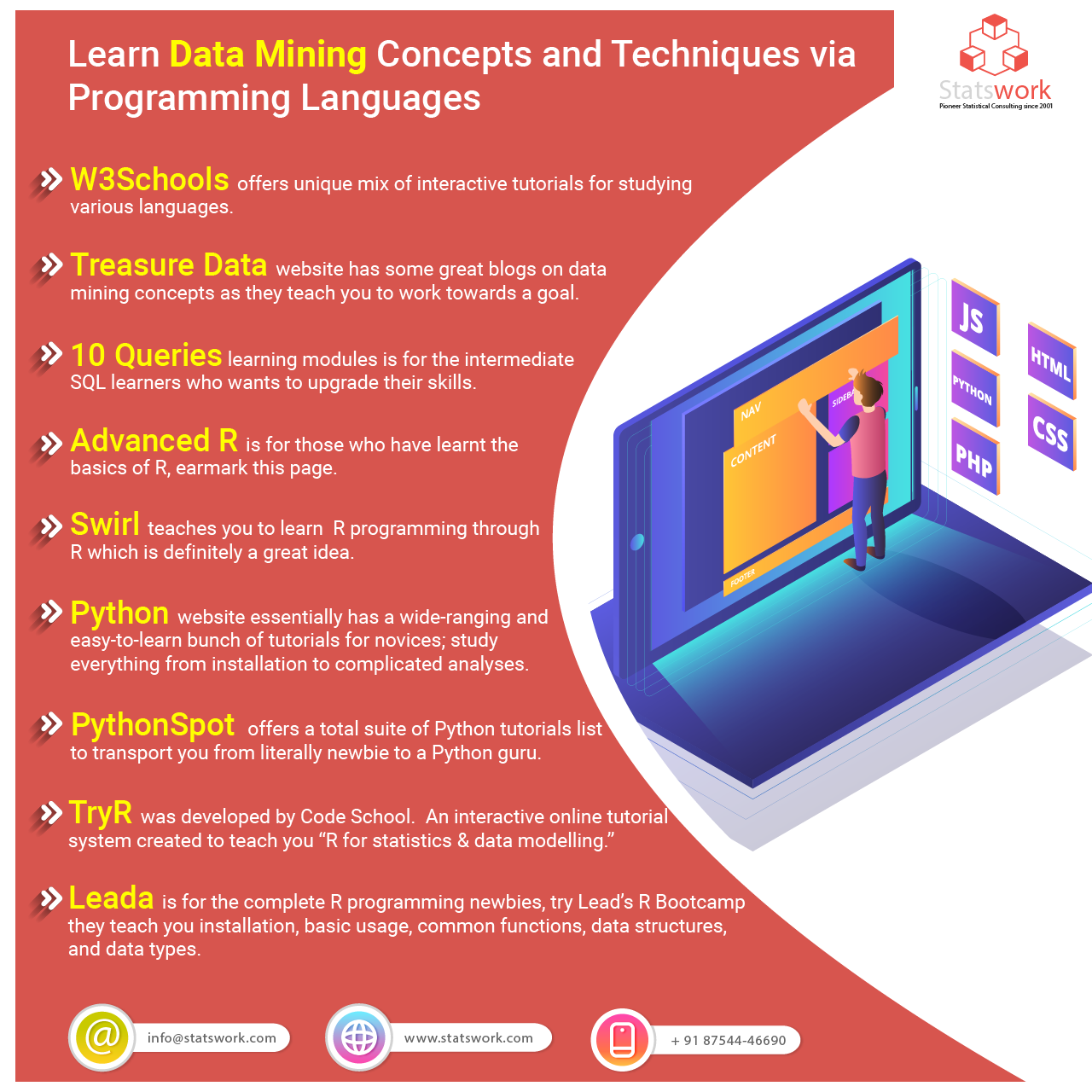Learn Data Mining Concepts And Techniques via Programming Languages
In the developing domain of big data, the role of a data miner is pivotal; your business may see the value in harnessing data. The key lies in knowing how to mine data for business success. Australian statisticians from Statswork offer some suggestions to learn the programming languages for data mining.
First, let us define data mining. Data mining is the course of habitually sorting over large data sets to identify patterns or trends. Data mining transcends the average data analysis that do manually. Data mining can rapidly rid the guesswork out of data by observing automated predictions of behavior. Hence, use data mining to harness and interpret large amounts of data.
That implies data mining has many merits you can assimilate into your knowledge discovery phases to collate information that affects your business revenue; say for instance, the banking and financial sector could use it to look at historical data and new trends to determine what type of stocks to invest in. Many firms leverage data mining to improve their profits and quickly make profitable decisions. Popular programming languages for data mining include these: R, Python, & SQL; hence we are going to discuss these in this blog. These programming languages are also great sources to learn data mining concepts and techniques.
Carry out big data analytics, statistical data analysis . Perform data mining by learning these 3 programming languages from the following sources:
- W3Schools offers unique mix of interactive tutorials for studying various languages. The SQL module is definitely worth giving a shot; learn how to work data in MySQL, SQL Server, Access, Oracle, Sybase, DB2, and the like.
- Treasure Data website has some great blogs on data mining concepts as they teach you to work towards a goal. A nice series of blogs where you can learn SQL from the foundation by following along with a simple, but common, data analysis practical instances.
- 10 Queries learning modules is for the intermediate SQL learners who wants to upgrade their skills. It’s a combination of ten arduous challenges combined wit with forums and external videos to help you scale up your SQL knowledge and knowledge of the basic principles.
- TryR was developed by Code School. An interactive online tutorial system created to teach you “R for statistics & data modelling.” You must study their 7 programs to learn badges to monitor your progress and help you to be on track.
- Leada is for the complete R programming newbies, try Lead’s R Bootcamp they teach you installation, basic usage, common functions, data structures, and data types. They also teach you to create your own development environment in RStudio.
- Advanced R is for those who have learnt the basics of R, earmark this page. It’s a great detailed style guide to using R; all programmers must endeavor to write great code, and this resource is from Google’s R style manual.
- Swirl teaches you to learn R programming through R which is definitely a great idea. Swirly does this for you and interactively teach you how to write a program in R. And perform some basic data science at your own convenience within the R console.
- Python website essentially has a wide-ranging and easy-to-learn bunch of tutorials for novices; study everything from installation to complicated analyses. Also provides you contact to the Python community, who will respond to your queries.
- PythonSpot offers a total suite of Python tutorials list to transport you from literally newbie to a Python guru. There are topics for all stages—beginners, intermediate and advanced learners.
By learning from the above sources suggested by Statswork, an Australian statistical consultancy services , you can program to perform data mining.



